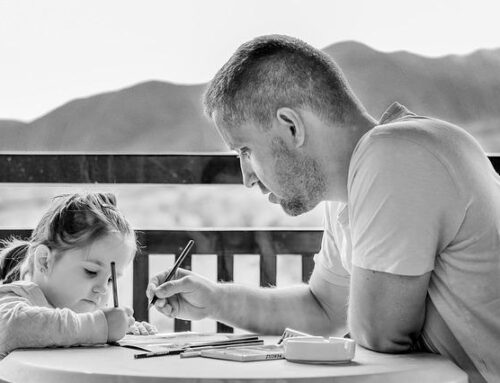When you think about therapy, you may conjure an image of an old man sporting a goatee and glasses, on a couch in an otherwise normal-looking office space. You may also find yourself with an uncomfortable image of talking with a complete stranger in great detail about minute details from your childhood that you have long since forgotten.
Side note: Let’s put a pin in feeling “uncomfortable,” I’d like to circle back around to this at a later time.
These thoughts and images may start to flood your mind until you think: “Nah, that’s not for me.” But before you make up your mind, and throw the baby out with the bathwater, I’d like to talk about what contemporary therapy may actually look like for you. If you’re on the fence about finding help for the overwhelming stresses of daily life, but can’t get past the thought that this isn’t for you, I ask you first to try to reframe your perspective.
The world of mental health has come pretty far in a relatively short period of time. Now granted, we still have a long way to go, as understanding humans is a complex thing to do. However, much of the old Freudian ideas of Oedipus and “hysteria” have started to fall by the wayside. The world of mental health is beginning to realize how strong the connection between a person’s thoughts, emotions, behaviors, and their physical body can be. When living in a society in which talking about your feelings, looks a lot like complaining, it’s easy to just bottle things up like a Coke fresh off the conveyor belt. But so often this will set the stage for your soda bottle to bubble over.
The world of mental health is beginning to realize how strong the connection between a person’s thoughts, emotions, behaviors, and their physical body can be.
Let’s talk about what therapy tends to look like now.
When you enter therapy for the first time, your therapist will likely ask you quite a few questions designed to get to know you. This may feel invasive and “uncomfortable” (there it is again), but it gives your therapist a compass on where to start and who you are as an individual.
From there, your therapist may start to draw out patterns of thoughts and behaviors, some of which you may realize and others you may not have noticed. Decades ago, therapists would identify themselves by a set of rigid therapeutic techniques and not veer from these much. Nowadays things have changed a bit. Most therapists are trained in a variety of different techniques, theories, and philosophies so they can meet the needs of the individual client. Between, CBT, DBT, Psychoanalysis, Humanistic and so many more, the theories and techniques are almost countless.
You see, what’s different now is that we realized that therapy is not a “one size fits all” type of deal, and most of us identify with an integrative approach that uses elements from many of these strategies.
One of the strategies I’m going to discuss in the future is called Dialectical Behavioral Therapy or DBT. It’s one of the therapeutic styles that I use in my sessions, but I also encourage my clients to use it in the time between our meetings. Without diving too deeply yet, DBT allows for the processing of feelings and emotions but takes out the judgment that can cause so much stress.
In other words, we’re not “complaining,” we’re “processing and understanding.” But it can’t stop there, DBT emphasizes the use of additional skills to help navigate, NOT to eliminate these emotions. It takes a philosophical approach that emotions are not “good or bad” (that would be judgmental) but that can make us feel “comfortable or uncomfortable” (that’s three times now if you’re counting).
In future blog posts, I hope to explore a little more of the DBT specifics, and ways it might be able to help. Stay tuned!





Leave A Comment